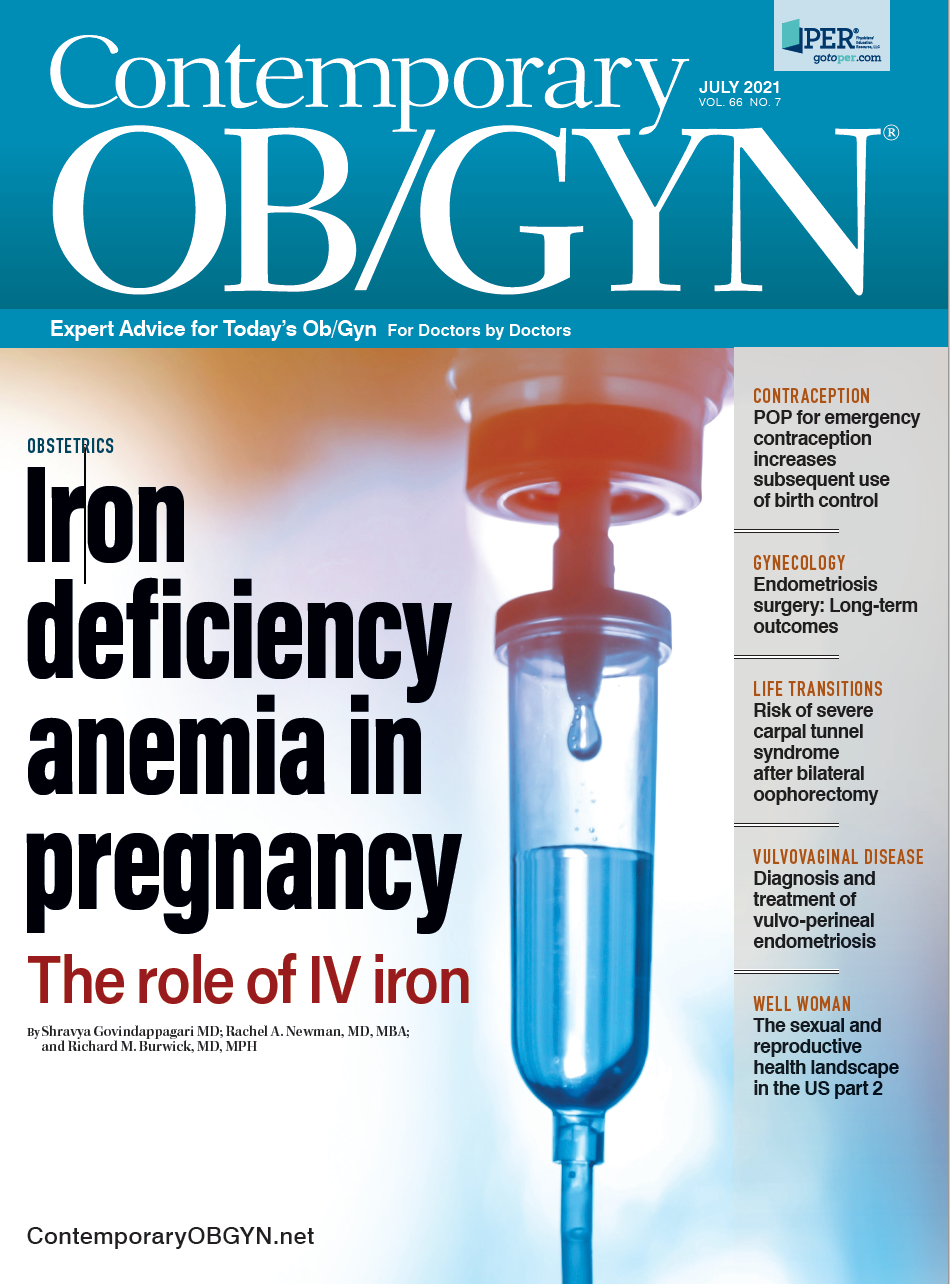Diagnosing and treating vulvo-perineal endometriosis
Due to the rarity of the disease and its variability in clinical presentation, the condition is hardly recognized by some health care professionals, leading to a delayed diagnosis.
In cases of perineal cyclical pain, with or without previous perineal damage, clinicians should consider perineal endometriosis, according to findings from a systematic review of diagnosing and treating vulvo-perineal endometriosis published in the journal Frontiers in Surgery.
Diagnosis via clinical exam, perineal ultrasound, and pelvic MRI is advised.
The authors searched Cochrane Library, Medline/PubMed, Embase, and ClinicalTrials.gov for papers in English, Spanish, Portuguese, French, or Italian from inception to July 2020.
The authors noted that vulvo-perineal endometriosis is an exceedingly rare entity, with only approximately 300 cases reported in the literature since 1923. The 90 included studies comprised 283 patients, with a mean age of 32.7 years.
Overall, 95.3% of patients presenting with vulvo-perineal endometriosis had undergone episiotomy, perineal trauma, vaginal injury, or surgery. Only 4.7% of patients developed vulvo-vaginal endometriosis spontaneously, ie, without any apparent condition favoring it.
Nearly all patients (98.2%) sought medical advice because their vulvo-perineal cyclical pain increased during menstruation.
Of the 281 patients for whom a clinical examination was described, 97.5% were found to have a vulvo-perineal nodule, mass, or swelling, whereas only 2.1% presented with bluish cutaneous lesions and 0.4% with bilateral polyps of the labia minora.
All but one patient underwent surgical excision of their lesions; however, only 28.1% received additional hormonal therapy. The recurrence rate was 10.2% for a median follow-up period of 10 months, based on 61 studies.
One of the conclusions of the review is that in cases of anal sphincter involvement, perianal ultrasound should be performed. Also, surgical excision of the lesion should be performed to remove the lesion and confirm the diagnosis histologically.
“Hormonal treatment could be proposed to attempt to decrease the size of a large lesion before surgery or to avoid recurrence of the lesion,” wrote the authors.
Vulvo-perineal endometriosis presents mostly after perineal trauma, yet its precise etiology is unclear. Still, the disease might be separated between cystic and nodular lesions with distinct etiologies and treatment.
Direct mechanical implantation seems the most likely hypothesis to explain scar endometriosis after OB/GYN procedures, according to the authors, whereby “mechanical dissemination during normal vaginal delivery, for example, allows transplantation of viable decidual endometrial cells into the episiotomy wound or perineal tear.”
Scar endometriosis, however, also can occur after general surgical procedures like appendicectomy, inguinal hernial repair, and laparoscopic cholecystectomy or even after laparoscopic gastric bypass.
Among the various explanations of the pathogenesis of spontaneously developing perineal endometriotic lesions, the most likely is lymphovascular dissemination. But the presence of endometriosis in the labia majora could also result from the direct spread of pelvic endometriosis along the round ligaments or canal of Nuck remnants.
Immunological, genetic, and familial factors also may be implicated in the pathogenesis of this condition.
Due to the rarity of the disease and its variability in clinical presentation, the condition is hardly recognized by some health care professionals, leading to a delayed diagnosis.
The review found a mean duration of symptoms of 12 months, ranging from 2 weeks to 20 years, before the disease was correctly diagnosed.
Because an evidence-based approach to the diagnosis, treatment, and recurrence rate of affected patients remains a challenge due to low prevalence—coupled with the variations in management and limited quality of available studies—the authors propose a prospective database of vulvo-perineal endometriosis to increase knowledge and awareness among health care professionals and to optimize patient care.
Reference
Maillard C, Alami ZC, Squifflet JL, et al. Diagnosis and treatment of vulvo-perineal endometriosis: a systematic review. Front Surg. Published online May 11, 2021. doi:10.3389/fsurg.2021.637180

Study finds high rates of incidental MRI findings in endometriosis cases
October 29th 2024A recent study highlights the frequent occurrence of incidental findings on pelvic magnetic resonance imaging for endometriosis, emphasizing the need for radiologists to focus on those with higher clinical significance.
Read More
